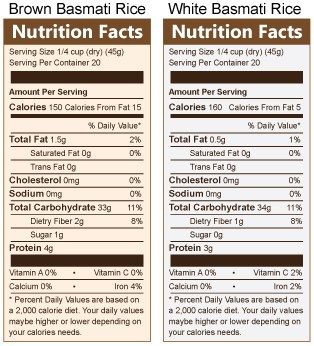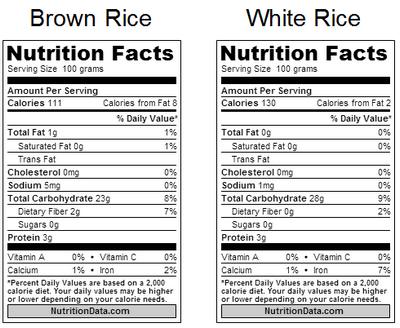
There are many ways to get the most of your nutrients from brown rice. In this article, we will discuss the difference between white and brown rice and the benefits of eating them. We will also discuss why it is important to eat whole grains and why it is important to consider the nutrition of all foods.
Eating Brown Rice – The main difference between brown rice and white rice is that brown rice is whole grain rice with no inedible exoskeleton attached. White rice is a type of white grain from which the hulls, bran, germ and seeds of cereals have been removed.
The difference between the two grains in terms of nutrient content is very large. They have the same content of protein, fiber, carbohydrates, potassium, salt, magnesium, phosphorus and iron, as well as essential vitamins and minerals to support a healthy diet.
If you are thinking about starting a healthy lifestyle, there are more whole grains than white rice. White rice can be a healthy alternative for those who prefer to skip a rice meal with their meals.
Brown rice is also a natural food source as it is almost gluten-free. It is also a rich source of fiber. This means you will be getting your RDA for fiber and additional fiber from brown rice. This will help you feel fuller longer and improve your digestion.
The calorie content of brown rice is also very healthy. They contain all the essential nutrients, vitamins, minerals and antioxidants needed to maintain good health. They are also a great source of protein. Protein makes up most of the nutrients in brown rice.
Brown rice is also high in antioxidants. Antioxidants are needed to neutralize free radicals in the body that cause many diseases.
It’s important to remember that the amount of brown rice calories you eat will depend on several factors. What you eat will have a big impact on how much you eat. So eat plenty of fruits, vegetables, whole grains, legumes, nuts, legumes, and fish. Also, limit your intake of red meat and dairy products, as these will improve your brown rice diet.

When you are trying to decide what kind of rice you should eat, make sure you choose the one that suits you. You want it to be high in protein, low in fat, and easy to digest.
High-fiber grains such as quinoa and millet are also good sources of fiber for people looking to lose weight. Cereals such as wheat berries, amaranth, and oats also contain natural fiber that helps lower bad cholesterol and regulate blood sugar.
If you need to eat a lot of grains to get the amount of brown rice you need, consider brown rice cakes or cookies. They are a great choice to help you satisfy your appetite when you are hungry.
Brown rice is also a good source of fiber. Try adding some flaxseed oil or flaxseed oil to your rice cake for even more fiber and antioxidants.
Brown rice is rich in protein, vitamin B12, vitamin E, potassium, zinc, manganese and other nutrients that promote good health. Brown rice is also a good source of fiber, which helps prevent constipation and other digestive problems. They are a good source of healthy fats, iron, and magnesium.
Brown rice can also act as a preservative. This means it will last longer and retain its color and flavor even if it hasn’t been cooked. So don’t worry about the taste and freshness of your food if you choose brown rice over white.
Eating brown rice and eating the right diet will help keep you healthy and prevent obesity. This means you can enjoy delicious and nutritious food every time without worrying about what you put into your body.
Brown rice is a popular choice for many because it is easy to prepare and delicious. Brown rice cakes, biscuits, and breads are some of the best choices when it comes to serving healthy and filling meals.